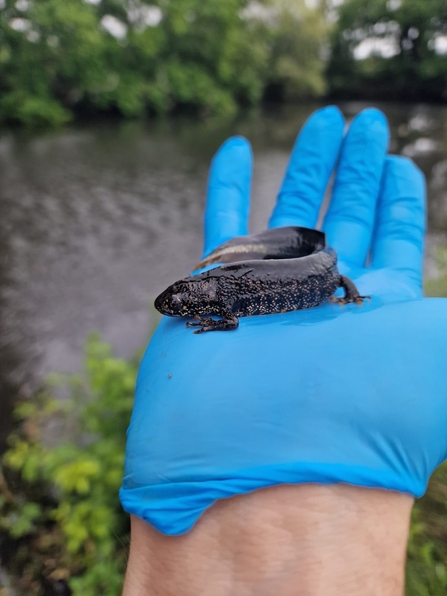Heading out to survey wildlife in the dead of night… It’s always a mixture of feelings: will it be worth it? Have I got everything I need? I must admit I still get tingles of excitement! Join me as I share my latest late night endeavours to find out how our habitat work at Brankley Pastures is fairing for one of our protected amphibian species.
You might be wondering why we have to survey for newts in the dark. Well it’s simple, this is when they’re most active, when they’re likely to be seen and when we’re most likely to attract them to our traps.
You might also be wondering why we need to survey for newts at all? So first off I’ll share a little bit of info on newts, their breeding activities and different species, before covering why we need to know if they’re using our newly created ponds.








